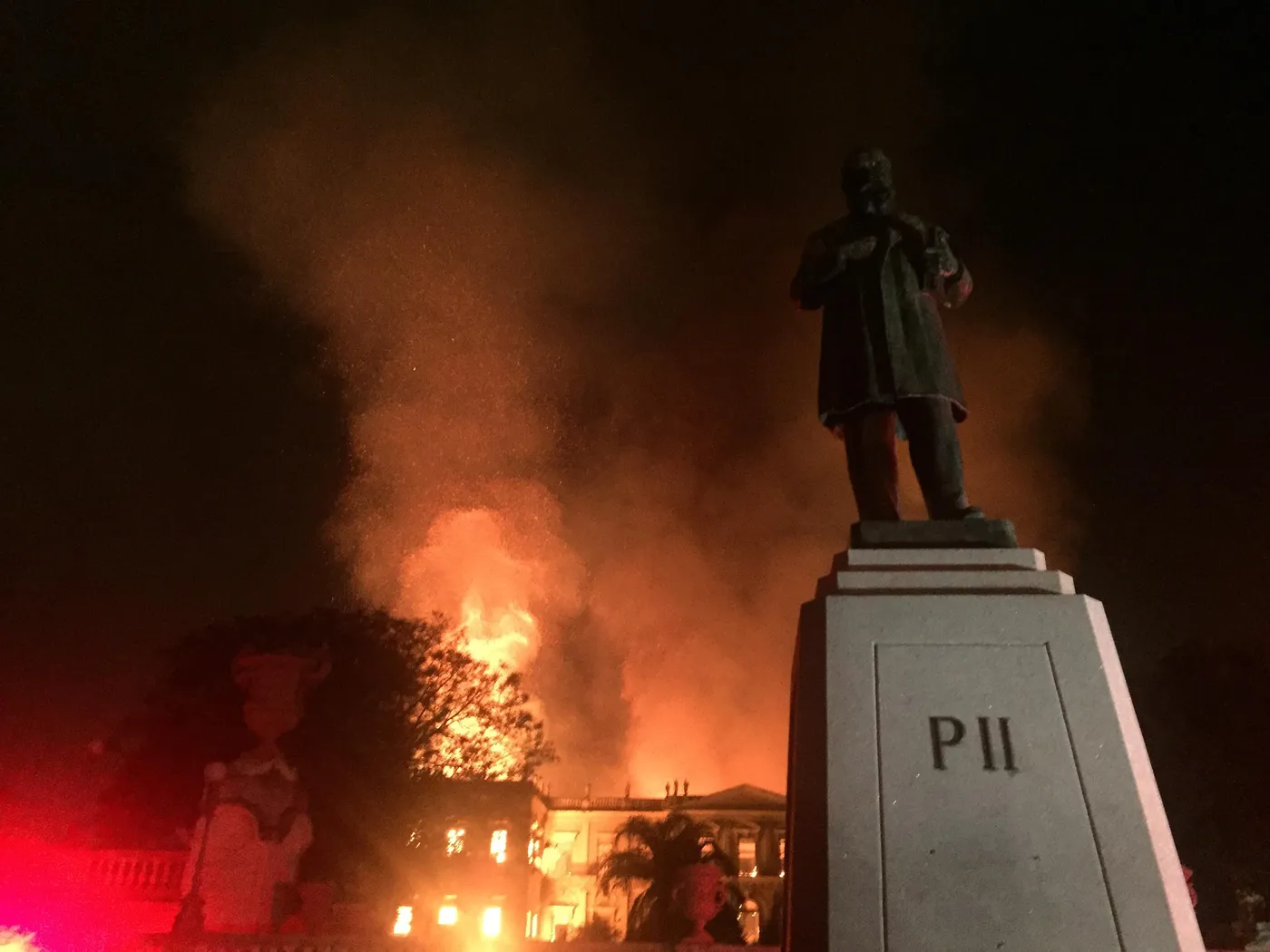How the Brazilian Tragedy Could Have Been Avoided
On September 2, 2018 the world watched as flames engulfed the National Museum of Brazil and 90 percent of its artifacts from around the world.
Recovery efforts are still underway, but almost certainly lost were the museum’s massive butterfly and arthropod collections numbering in the millions, a 3,500-year-old Chilean mummy, an 811,500-year-old skull said to be the oldest in existence from the Americas, several dinosaur skeletons, a 2,700-year-old sarcophagus among hundreds of other ancient Egyptian artifacts, and countless other irreplaceable assets.
“Two-hundred years of work, research and knowledge have been lost. The value of our history cannot be measured…It’s a sad day for Brazilians,” The President of Brazil said.
The museum’s antiquated infrastructure, lack of funding and negligence toward fire protection, as well as Brazil’s limited fire code enforcement, has been well documented. Reportedly, not only did the museum lack water sprinklers but also working fire hydrants. Fire personnel had to retrieve water from a nearby lake.
The breakdown in funding and accountability resulted in what will go down as one of the most devastating museum fires in history.
However, this isn’t necessarily a geographic or socio-economic issue, but rather a common issue faced by many museums and historical sites around the globe. A 2012 report by the American Association of Museums found a 14 percent decline in U.S. museum funding since 1989 (from 38 percent to 24 percent).
Clearly, museums are feeling the financial burden. And like the National Museum of Brazil, some seek financial relief by foregoing proper fire protection.
Quite literally, any organization who shares this philosophy is playing with fire.
What Can We Learn from this Event?
While an all-consuming fire resulting in this amount of damage and emotional impact is rare, fires do indeed occur. The National Museum of Brazil tragedy is an extreme example of what can happen when fire protection is ignored.
So, how do we ensure this doesn’t happen again? How do we ensure this doesn’t happen to your business?
The obvious solution is to furnish special hazards with the latest in early-warning detection and fast-acting suppression systems. However, sometimes misunderstood is this doesn’t have to be an all-or-nothing proposition.
When proper consideration is given to the risks present, the value of the property being protected and the budget available for life and property protection systems, there is always a solution that’s better than doing nothing. There are many levels of responsible protection available between the extremes of sprinklers and state-of-the art detection and waterless suppression systems.
In addition to meeting mandatory fire codes, organizational decision makers should contact a fire safety professional like Fike or one of the hundreds of Fike distributors around the world. Our team has decades of experience working within finite budgets to create customized solutions to protect people and irreplaceable assets.
There are low-cost options available in the realm of fast-acting, non-damaging gaseous agent fire suppression systems, such as Fike’s ECARO-25 suppression system. Fires can be detected before they reach a size that can cause heat or smoke damage through the use of early-warning air sampling systems with voice evacuation systems to immediately alert staff to a fire hazard.
These solutions can of course be designed and installed to protect an entire facility, or for limited budgets they may be customized to protect the facility’s most critical assets.
The value of cultural and historical loss from the Brazil museum fire is unimaginable. It is an unfortunate reminder for decision makers to consider not only the up-front cost of fire protection but the potentially incalculable cost of doing nothing.

